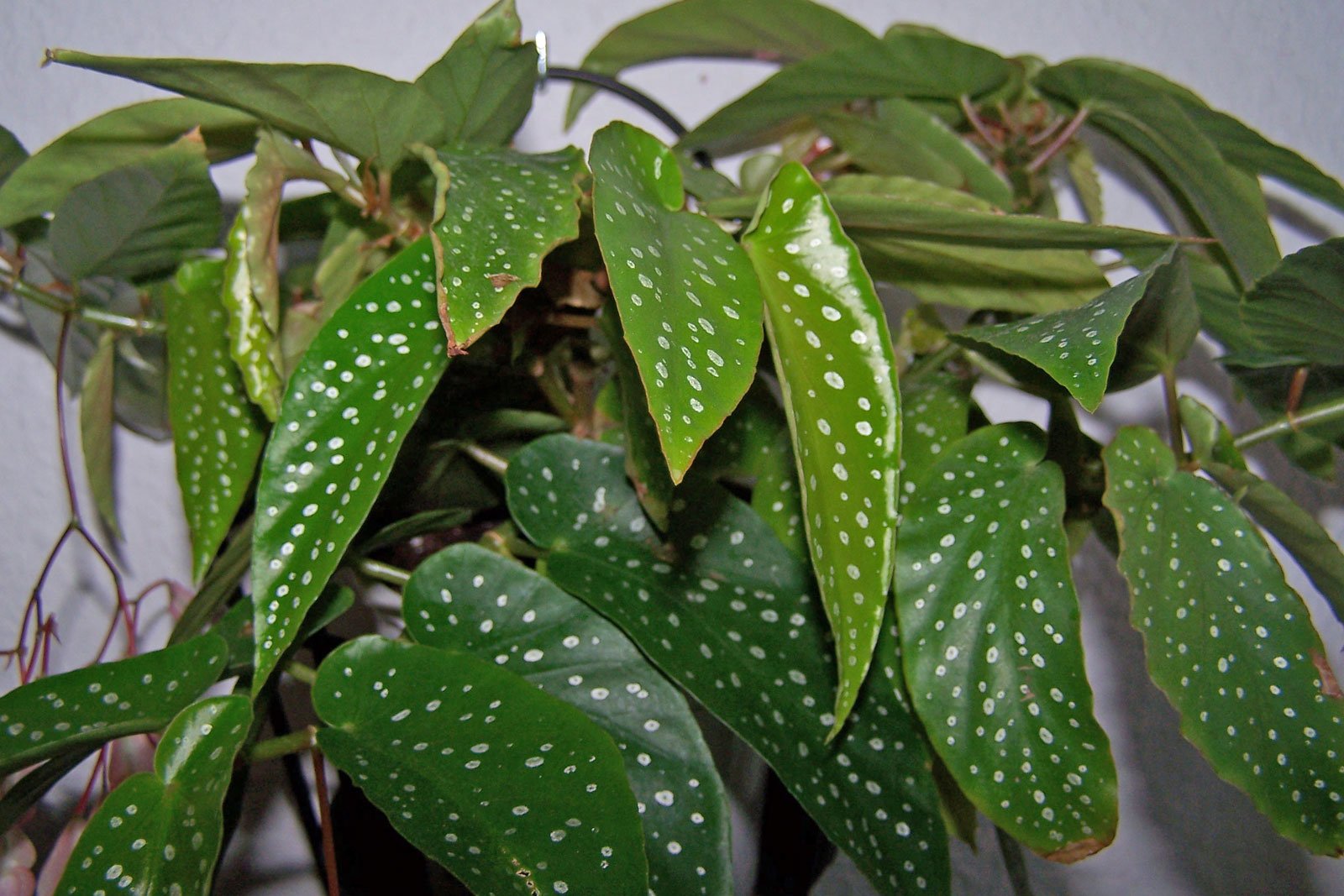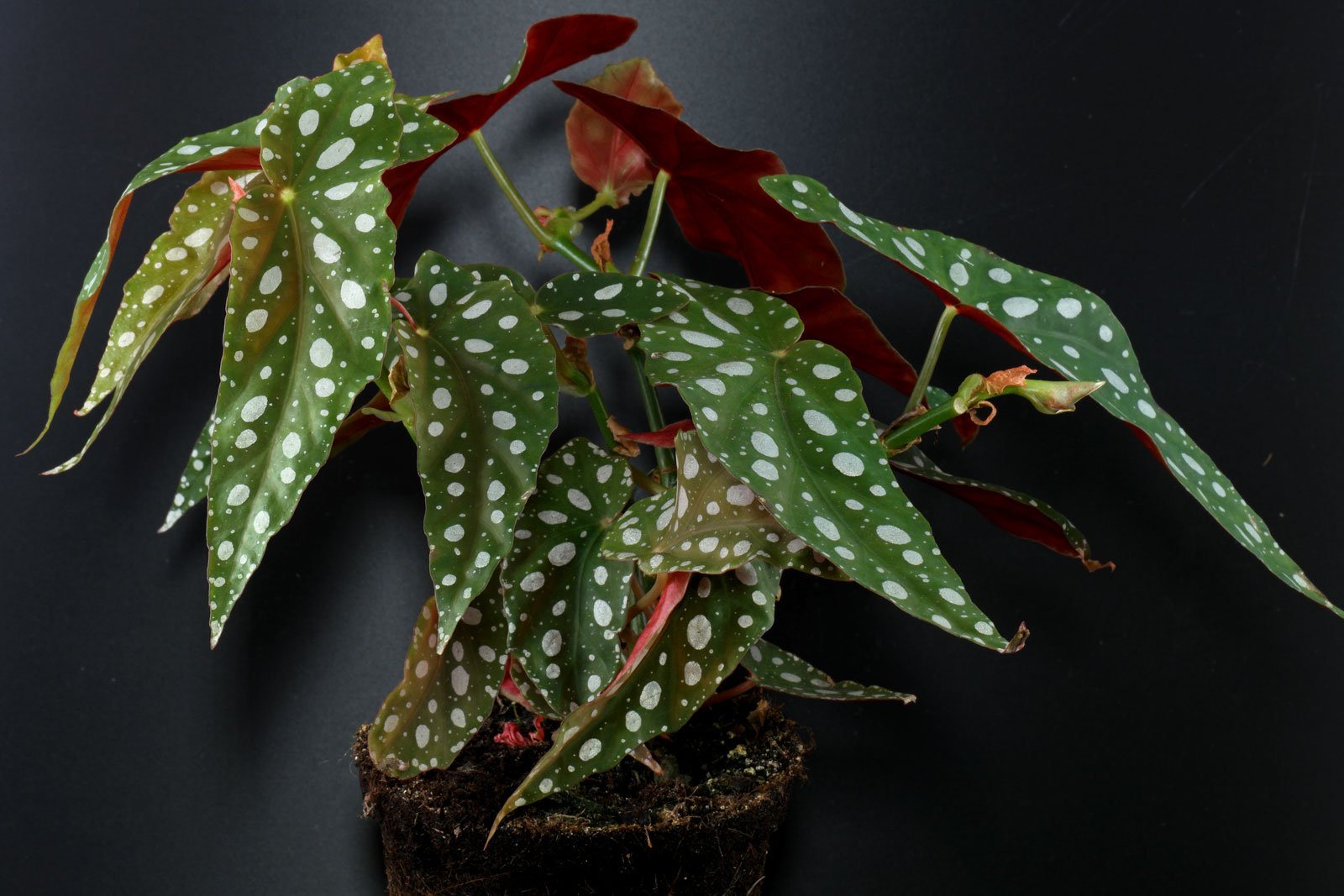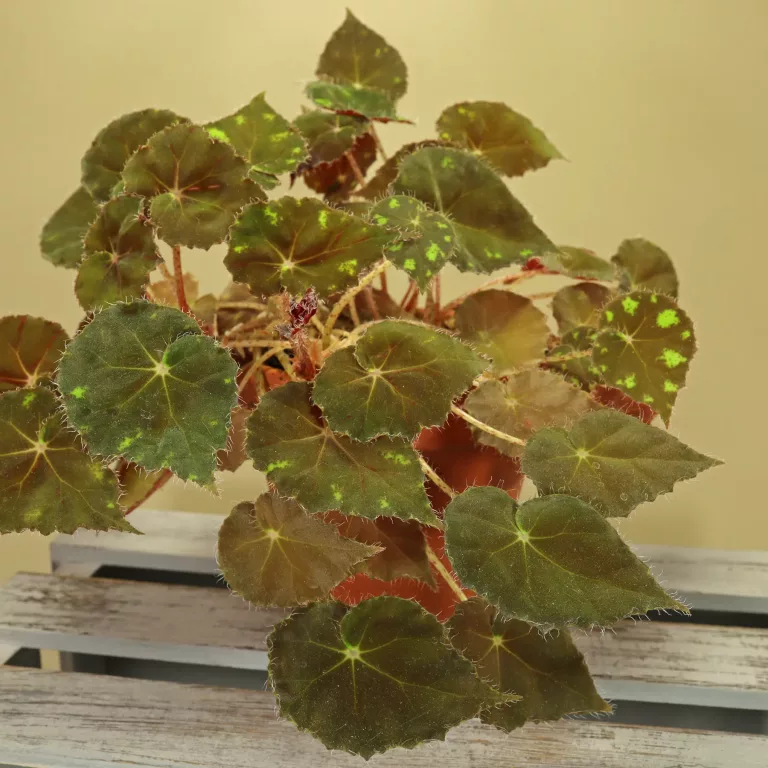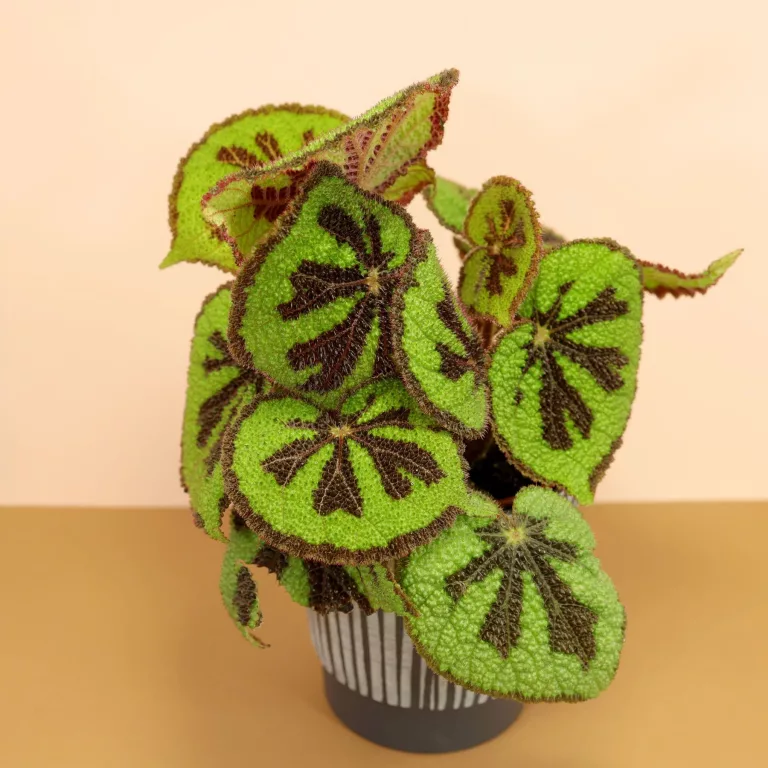Polka Dot Begonia

Care
Lighting
Bright to part sunny locations, with morning, evening and winter sun are fine. If the pot placed is at least one meter behind the window, Begonia maculata will also tolerate some hot summer sun.

Soil
Regular mixes for indoor and container plants as well as for herbs and vegetables.

Watering
The soil should be allowed to dry moderately between the waterings. Let it only dry to about 80 % of the pots height before adding water. Avoid the soil from drying out, otherwise flower buds can be thrown off.

Humidity
As long as Begonia maculata doesn’t stand above or close to a heater in winter, it gets along well with “regular” indoor humidity. Nevertheless, it is helpful if the leaves are sprayed or showered from time to time to free them of dust.

Feeding
Standard or organic liquid fertilizer can be given every 4th to 8th week during the growing season, which usually lasts from spring to autumn. Long-term fertilizers such as sticks, granules or pellets once each in spring and summer. New bought or recently repotted plants don’t need to be fed for the first year.
Temperature
According to its tropical origin, Begonia maculata likes it warm the year round. It can spend the winter at 15 to 20 °C (59 to 68 °F) and should not be placed below 10 °C (50 °F) for very long.

Propagation
Stem cuttings and leaf cuttings.

Profile
Scientific name
Begonia maculata
Common name(s)
Polka Dot Begonia
Family
Begoniaceae
Origin
South America (Argentina, Brazil)
Height
Up to 150 cm
Toxic
No



